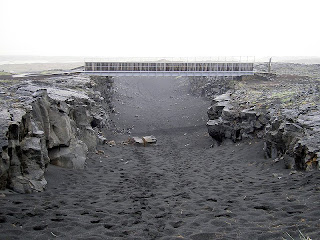In plate tectonics, a Divergent boundary or divergent plate boundary ( also known as a formative boundary or an extensional boundary) is a direct point that exists between two monumental plates that are moving down from each other. These areas can form on the end of mainlands but ultimately form ocean basins.
Divergent boundaries within mainlands originally produce rifts which produce rift dene thus, most active divergent plate boundaries are between oceanic plates and are frequently calledmid-oceanic crests.
Divergent boundaries also form stormy islets which do when the plates move piecemeal to produce gaps which molten lava rises to fill. therefore creating a guard powder keg which would ultimately make up to come a stormy islet.
Although still an area of active exploration, it appears that according to complex convection within the Earth's mantle material rises to the base of the lithosphere beneath the divergent plate boundary. This supplies the area with vast quantities of heat and a reduction in pressure that melts gemstone from the asthenosphere( or upper mantle) beneath the rift area forming large flood tide basalt or lava overflows.

Each eruption occurs in only a part of the plate boundary at any one time, but when it does do, it fills in the opening gap as the two opposing plates move down from each other. The average rate of movement is similar to how fast mortal fingernails grow,( about2.5 cm per time).
Over millions of times, the plates have moved numerous hundreds of kilometers down from both sides of the divergent plate boundary. Because of this, jewels closest to the boundary are youngish than jewels further down on the same plate. Bridge across the Álfagjá rift vale in southwest Iceland, that's part of the boundary between the Eurasian and North American international monumentalplates.The hot spot which may have initiated theMid-Atlantic Ridge system presently underlies Iceland which is widening at a rate of a many centimeters per time.
Divergent boundaries are illustrated in the oceanic lithosphere by the rifts of the oceanic crest system, including theMid-Atlantic Ridge and the East Pacific Rise, and in the international lithosphere by rift denes. similar as the notorious East African Great Rift Valley. Divergent boundaries can produce massive fault zones in the oceanic crest system. Spreading is generally not invariant, so where spreading rates of conterminous crest blocks are different, massive transfigure faults do.
A ocean bottom chart will show a rather strange pattern of skinny structures that are separated by direct features vertical to the crest axis. If one views the ocean bottom between the fracture zones as conveyor belts carrying the crest on each side of the rift down from the spreading center the action becomes clear. Crest depths of the old crests, resemblant to the current spreading center, will be aged and deeper( from thermal compression and subsidence).
It's atmid-ocean crests that one of the crucial pieces of substantiation forcing acceptance of the seafloor spreading thesis was set up. Airborne geomagnetic checks showed a strange pattern of symmetrical glamorous reversals on contrary sides of crest centers. The pattern was far too regular to be coincidental as the extents of the opposing bands were too nearly matched. Scientists had been studying polar reversals and the link was made by LawrenceW. Morley, Frederick John Vine and Drummond Hoyle Matthews in the Morley- Vine- Matthews thesis. The glamorous banding directly corresponds with the Earth's polar reversals.
This was verified by measuring the periods of the jewels within each band. The banding furnishes a chart in time and space of both spreading rate and polar reversals. TheMid-Atlantic Ridge Red Sea Rift Baikal Rift Zone East African Rift East Pacific Rise Gakkel Ridge Galapagos Rise Explorer Ridge Pacific- Antarctic Ridge West Antarctic Rift.
Visit Official Home Page






0 Comments